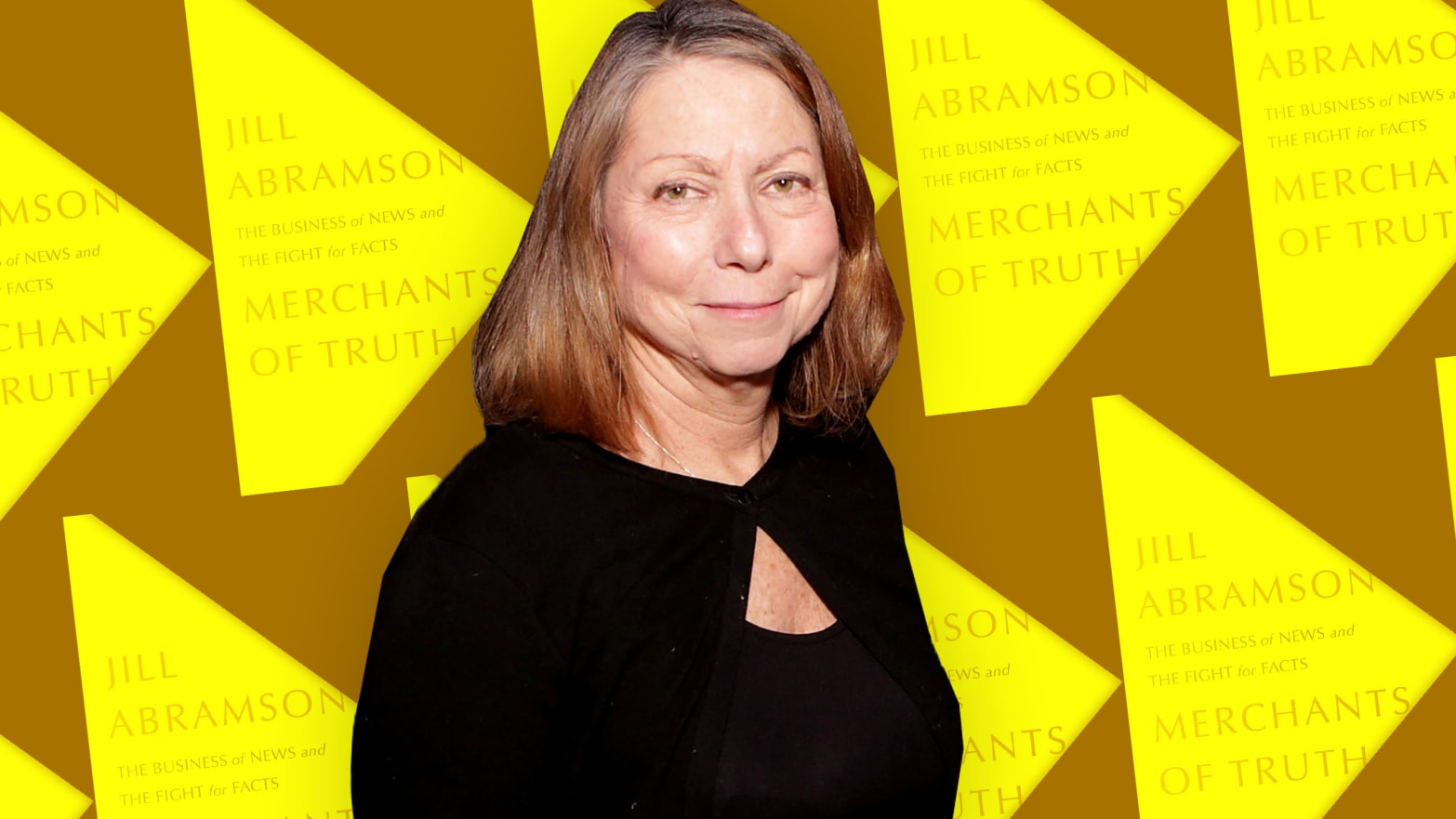The New York Times was airing its own dirty laundry, and Executive Editor Dean Baquet was not pleased.
Shortly after the 2016 election, the then-public editor of the Times published a piece saying the paper was “too timid” in its decision to sit on evidence in the summer and fall of 2016 of potential Russian meddling in the presidential election.
Political reporter Eric Lichtblau has been frustrated with the Times' hesitancy to publish some stories on this beat as well, and Baquet suspected he had spoken to the public editor Liz Spayd about his frustrations.
Following Spayd’s brutal assessment, the top editorial figure at the Times offered a blunt criticism to Lichtblau, whom he blamed for disclosing issues he had with the Russia coverage.
“I hope your colleagues tear you a new asshole,” Baquet said in an email.
The anecdote is one of several nuggets and revelations in former New York Times executive editor Jill Abramson’s forthcoming book Merchants of Truth. The book, which will be released in February and was obtained early by The Daily Beast, retells the tumultuous evolution of the national news landscape over the last two decades through the lens of four media companies: BuzzFeed, Vice, the New York Times, and the Washington Post.
The New York Times and Abramson have not returned requests for comment about Lichtblau incident and other anecdotes The Daily Beast asked about from the book.
In over 400 pages, Abramson traces the trajectories of BuzzFeed and Vice from their inception in the early 2000’s to the present, sprinkling new details through storylines that will likely be familiar to close observers of media. The birth of the BuzzFeed listicle is covered, the lurid details of Vice creator Shane Smith’s vulgar and hard-partying antics are discussed in detail, as is the Washington Post’s recent evolution into a national news powerhouse through its scaled strategy of slotting ambitious investigative reporting next to sensational aggregation.
Abramson is a patient, diligent, and fair chronicler of those organizations. But whether deliberately or not, the most detailed parts of the book are dedicated to Abramson’s former employer.
When the ousted former executive editor netted a $1 million book deal in 2015 with Simon & Schuster, a spokesperson for the publisher insisted that the book would not be a score-settling endeavor with the New York Times, which had given Abramson the boot following disagreements with the publisher and some top editorial staff.
But in the chapters dedicated to America’s most storied newspaper, Abramson candidly offers her assessment of the paper’s transformation in recent years, including detailed recollections of many of the events that led to her departure.
Her opinion of the paper’s course over the past 15 years is largely positive. She concludes that the Times has in many ways accomplished its primary goal: Transitioning to the digital era, and making difficult cuts, without forfeiting quality (“The news report as a whole had never been stronger,” she writes).
Abramson discusses how she overcame some bitterness toward former Times publisher Arthur Sulzberger, who fired her, and credits him with some of the business decisions which have ultimately benefited the paper’s bottom line (even if she acknowledges she’s uncomfortable with the measures).
Abramson also acknowledges what she perceives as her own faults that contributed to her ousting. At points in the book, she says she was not a great manager, and did not handle some major challenges correctly. Despite assuming that her replacement Dean Baquet was the source of many complaints about her, she also credits him with strengthening the paper’s coverage of the Trump administration, and sympathizes with some of the difficult situations he has faced.
But it's her criticisms of the Times that have already garnered the most attention.
Abramson doesn’t hold back in her assessment of the failings of the paper during the 2016 election.
She asserts that although the Times did “admirable” hard-hitting investigative work during the election, the paper did not give Donald Trump the kind of “microscopic vetting” that was directed at Hillary Clinton because the paper believed she would prevail. In her assessment, the Times had simultaneously not spoken to enough Trump voters, and had not dug as deep as the Washington Post on some Trump campaign stories about former campaign chief Paul Manafort.
She also says that while the paper’s editors didn’t hold anti-Clinton biases, as the Clinton campaign believed, the paper “made bad judgement calls and blew its Clinton coverage out of proportion.”
Abramson also notes how some of the paper’s business decisions have had negative consequences.
She points out how the Times did not clearly label a series of sponsored posts by Vea, a division of the company that makes Oreos, as advertisements. She writes that although she understands the financial need for many Times journalists to augment their income with cable news contracts, she “worried that the new star system was poisoning the culture of the newsroom and creating a caste system.”
Abramson’s departure from the Times accounts for just a tiny portion of the book. Yet she discloses in detail how she believes some criticism of her leadership style was sexist, and partially influenced her firing from the paper.
The former executive editor recalls how in 2014, Sultzberger delivered a harsh evaluation in which he “portrayed my forcefulness as high-handed rather than leaderly.” According to Abramson, the evaluation, which was the result of input from some of the top staff at the Times, could be boiled down to “people think you’re a bitch.”
And while she says she was used to people saying she wasn’t “likeable,” Abramson says she learned of a pay disparity between herself and her predecessor Bill Keller, and briefly consulted with a law firm that specializes in gender discrimination (she decided against any legal action because she did not want to “end my career in messy litigation against the institution I loved”).
Abramson hasn’t been quiet about her opinions of the Times, which she says come from a deep place of love and respect for the paper.
Following her departure as editor in 2014, the former executive editor has periodically made news and provided fodder for critics of the Gray Lady by offering her opinions on the editorial decisions of her former employer. Earlier this year, Abramson told The Daily Beast the Times needed a “course correction,” specifically knocking the paper for failing to adequately cover Rep. Alexandria Ocasio-Cortez’s upset congressional bid and over-covering the story of how a Times reporter became ensnared in a leak investigation involving her ex-boyfriend.
Merchants of Truth has already been a minor headache for the Times. The paper’s PR team disputed Abramson’s recollection of a letter Sulzberger sent to the Chinese government, which she said essentially apologized for one of the paper’s investigations.
The book has also enlivened the paper’s enemies.
Earlier this week, Abramson criticized Fox News media critic Howard Kurtz for taking a part of her upcoming book “totally out of context” by claiming that the book “rips” the paper’s coverage as anti-Trump.
“His article is an attempt to Foxify my book, which is full of praise for The Times and The Washington Post and their coverage of Trump,” she wrote in the email to the Associated Press.
In a tweet on Saturday, Trump joined in, sharing the headline of Kurtz’s article and saying he agreed with the sentiment. Abramson quickly pushed back, saying on Twitter anyone who reads the book will “find I revere the @nytimes and praise its tough coverage of you.”
Abramson appeared to anticipate the backlash in her book, but concluded that even airing some of the painful memories and disputes are necessary to correctly accounting the paper’s recent history.
“I cannot pretend to be objective about all of my experiences at the Times,” she writes in the book.
“The period I am writing about brought a lot of challenges and pain to my life as well. But like [Henry] Adams’s education in a world of scientific and technical changes, my digital education was both revelatory and searing.”

